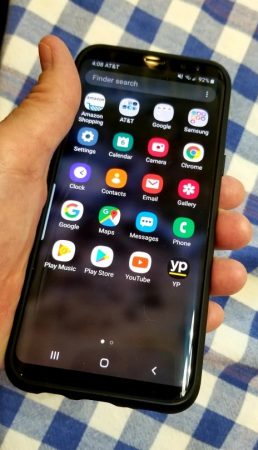Business owners will benefit from this since they will be able to communicate more effectively with clients and promote their brand’s identity through mobile phone apps. Anyone who runs a business can profit from establishing an app, which can be used to raise sales, advertise products, and improve the brand’s reputation. Customers’ use of an app may become frequent in the future, and it may even become a critical component of completing a sale. If you want to be competitive in today’s industry, you must have a mobile application developed.
Find out what you want to do before you start:

The first and perhaps most crucial step in creating an app. Creating a project from scratch only to discover that someone else has previously done it the same way is a waste of time, effort, and resources. Remember that you’re not the only one who thinks like this. What distinguishes my app from others? Whatever sets you apart from the rest of the group could be anything from a valuable item to an original algorithm or logo. People who are adept at marketing have made a lot of money.
Investigate possible search terms for your app in the app stores or on Google (e.g., Denver mobile apps, Denver SEO, depending on the project you’re working on). If there is any, check out the competition to see what you’re up against. Your application’s purpose, destination, and how to get there will become more apparent as you spend more time investigating.
Your objectives:
What exactly can a mobile application accomplish for you? Two of your essential tasks are providing excellent customer service and promoting your company. Think about using a responsive design or a web application instead of trying to make your website into an application. It is recommended that you first determine what your clients, employees, or members of the general public require and then ensure that the app meets their needs before designing a mobile application.
Decide the platform: Apple or Android
It might be difficult to know which platform is appropriate for your application as a developer. When deciding between Android and iOS, think of a single UI for your app. To create an excellent paper, you need to know a great deal about your audience. Who will put it to use? Those who wish to use it are The operating system and device they are now utilizing.
Android:
It’s more popular than Apple, and there are more low-cost, high-quality Android devices available than Apple. Many app developers who don’t intend to monetize their apps are like this. China and India together account for one-third of the global population.
Apple:
Apple is your best bet if you want to make money selling apps. On the other hand, Apple wields considerable influence just under its brand name. Apple can be afforded by the rich and well-off, and they don’t mind the price. As a result, many builders start by offering their properties for sale with this kind of construction. A lot of the time, Apple’s apps are developed and updated before Android’s.
In-App Features:
Ask yourself: What is it that you do well? A lot of care must be paid to it. Adding features that most users don’t need is common in software development. However, several features detract from the app’s primary purpose. What consumers prefer about applications in terms of features:
- A push notification is a notification that is sent to people
- The community wall
- Capabilities of GPS
- Surveys and questionnaires
- Hubs for video, images, and sound
- The ability to book
- Is it possible to connect your calendar to the calendar?
- Is it used to buy things on e-commerce sites
- Ordering things
- The user directory
At this early stage, simplicity is the most crucial consideration. The primary function of your program does not require the user to be at a specific location; hence GPS is not required.

Understand your users:
You can’t create an App if you don’t know who will use it. It’s like aiming a gun at the sky and hoping for the best. Apps that aren’t beneficial to the user’s life are unlikely to be installed on their phone. Is there a specific demographic you’re targeting with your app? If this is the case, you’ll want to consider their preferences and wants while creating your mobile app’s User Experience and User Interface (UX/UI). Apps for children may be more colorful and graphic-based, while apps for adults will be more straightforward and tidier.
It’s usually a good idea to get user input. Customer comments should be taken into consideration. If your app’s goals are in sync with those of your users, you will be unable to stop it. As a result, you’ll be able to expand the number of people that use your product.
Safety and performance:
Next, we must see how effectively the program functions. This has never been more critical. Identifying and correcting problems that are too significant to overlook in your mobile app is easy when you focus on the correct KPIs. Things like user engagement KPIs, user interface/user experience (UI/UX), the growth rate of users, optimization of app store listings, and organic conversion rates are all important to consider when evaluating an app’s performance. Keeping tabs on where your program stands in the Google Play Store or the Apple App Store is critical.
If you have a mobile app that needs sensitive data from a non-technical user to run, you need to find out how to protect it. In other words, this is how it went: Mobile app security has become a critical issue that can’t be ignored any longer. Furthermore, the most valuable asset you have is the information about your actual users. As the last step, make sure your data collection and security practices are up to par.
To sum it up:
No matter how much expertise you have in application development, there is always space for improvement. Rather than blindly trusting a company and hoping for the best, it would be best if you first educate yourself about mobile app development. If new technology and tools are made accessible to you, do not hesitate to employ them. You don’t need to write code to create an application in today’s environment.


